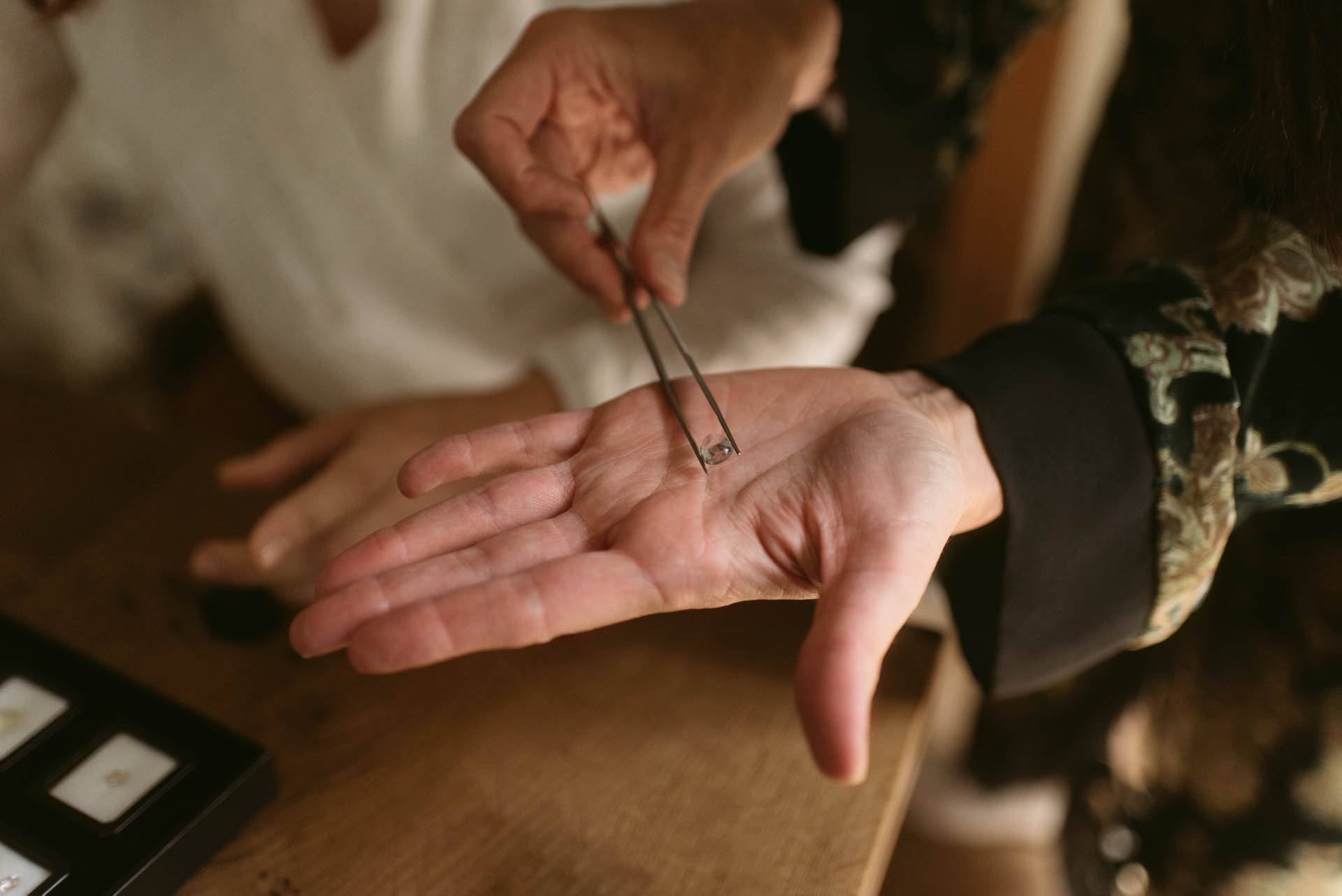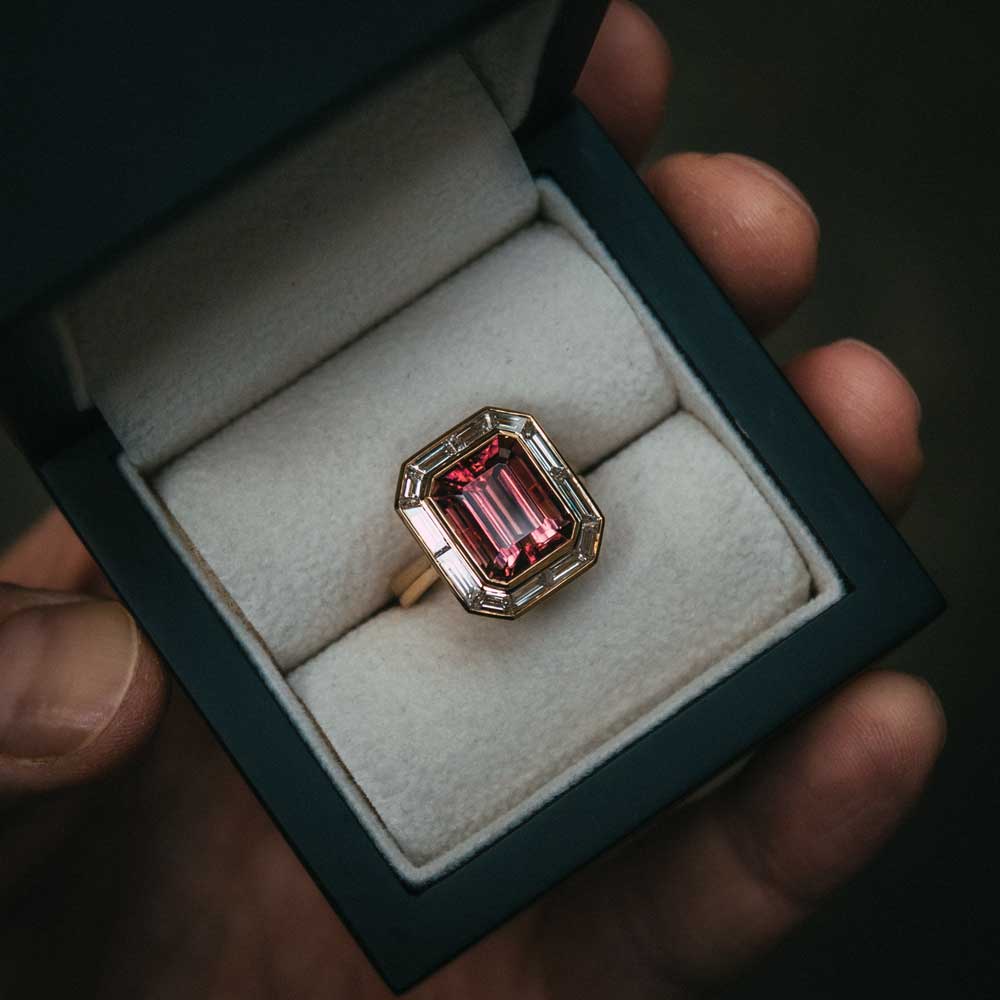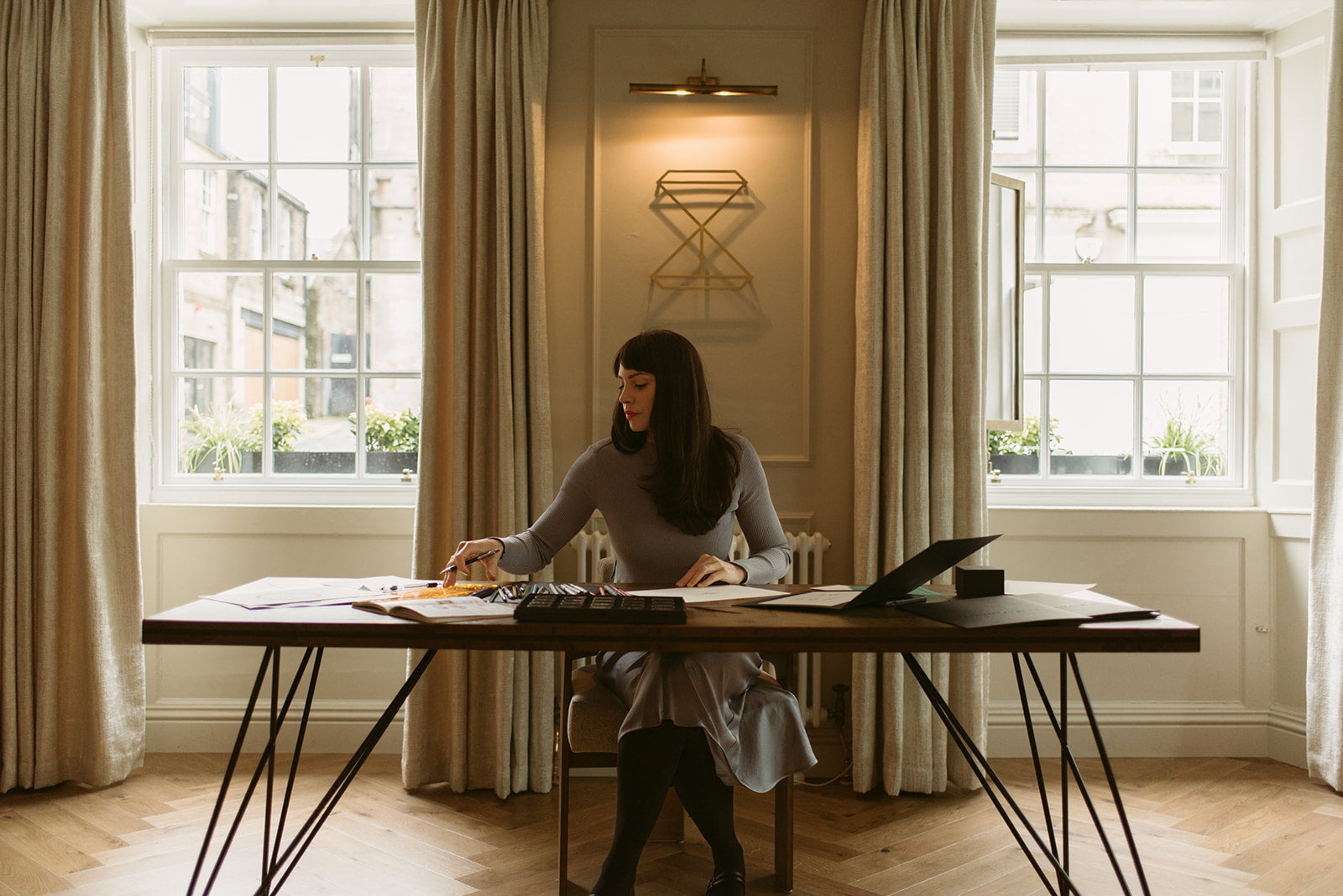When it comes to choosing a diamond, the decision between natural and lab-grown is increasingly topical. Over the last few years, technological advancements have made lab-grown stones more accessible than ever. At Moira Patience Fine Jewellery, however, we work exclusively with natural diamonds - responsibly sourced or antique and old-cut. In this post, we’ll explore the distinctions between both options, share our own perspective, and highlight why we’re passionate about the story behind natural gemstones.

Lab-Grown Diamonds: A Quick Overview
How They’re Made
Lab-grown diamonds are produced using high-temperature, high-pressure technology. In essence, they replicate the conditions under which natural diamonds were formed, but inside a factory (most of these are based in India or China).
Pros & Cons
- Pros: One advantage often cited is the absence of large-scale mining. Some labs use renewable energy, theoretically reducing the carbon footprint. The price point can also be significantly lower than a comparable natural diamond.
- Cons: Energy usage varies widely among labs; if non-renewable energy is used, the carbon emissions may be greater than you’d expect. In addition, with no inherent rarity, lab-grown diamonds can be mass-produced, meaning their resale value tends to decrease rapidly.
Ethical Considerations
Lab-grown stones eliminate certain mining processes, but established mines that follow strict environmental and social guidelines can also provide vital livelihoods and community infrastructure in diamond-producing regions. In short, the term ‘ethical’ can mean different things to different people depending on your values and perspective.

Natural Diamonds: Formation & Rarity
The Beauty of Earth’s Creation
Natural diamonds form over millions (even billions) of years, deep below the Earth’s surface. Their rarity and geological history are part of their character, carrying a unique story of time, pressure, and elemental forces.
Supporting Reputable Mines & Communities
At Moira Patience, we partner with suppliers who adhere to strict environmental protocols and legally binding commitments to restore mined land. These reputable mining operations also create jobs and support local economies, often in areas that rely heavily on the diamond trade. Sourcing from trusted suppliers, such as De Beers or CanadaMark, can give you added confidence in the ethical and traceable background of your diamond.
Antique & Old Mine Cuts
We also love working with old mine cut or antique diamonds, which come from pre-existing jewellery pieces. Not only do these stones have a distinct sparkle and shape, cut before the era of laser technology, but they also reduce the need for further mining. For those looking to lower their carbon footprint while still wanting a natural gem, antique stones are a wonderful blend of heritage and sustainability.

Why Moira Patience Chooses Natural Diamonds
-
A Deep Appreciation for Nature
We believe there’s something profoundly magical about diamonds born from the Earth’s mantle - an intrinsic beauty and rarity that can’t be replicated in a lab. -
Supporting Mining Communities
Many of our long-standing relationships are with regulated mines that sustain local economies. By choosing their diamonds, we actively support responsible labour practices and community infrastructure, rather than funnel resources away from areas that depend on mining for their livelihood. -
Meaning & Legacy
Natural diamonds aren’t infinite, which only heightens their preciousness. There’s an enduring romance in wearing a gem that has formed over millions of years - one that, in our view, resonates with the sentiment behind fine jewellery and heirloom pieces. -
Avoiding Confusion
By focusing solely on natural stones, we keep our offerings clear and consistent. We also reduce the potential for confusion about origin, resale value, and the authenticity of your piece.

Lab-Grown: Right for Some, But Not for Us
We recognise that lab-grown diamonds will continue to find a place in the jewellery market. They often come at a lower cost and can be appealing if you’re not concerned about geological history or potential variations in resale value. Some people simply prefer the idea of a stone made in a lab. We fully respect that choice; however, at Moira Patience, we’ve chosen to focus on natural diamonds due to the reasons outlined above.
Frequently Asked Questions
1. Are lab-grown diamonds ‘real’?
Yes, lab-grown diamonds have the same chemical, physical, and optical properties as natural diamonds. The main difference lies in their origin and rarity.
2. Is one option more eco-friendly than the other?
It depends. Reputable natural diamond mines follow strict environmental and social standards, whereas some lab-grown operations run on clean energy. On the other hand, certain lab-grown stones may require significant non-renewable energy. It’s wise to research the specific mine or lab.
3. Do lab-grown diamonds hold their value?
Typically, resale values for lab-grown diamonds are lower and more volatile due to their ability to be mass-produced. Natural diamonds, especially those with strong provenance or antique pedigree, often hold more stable value over time.

Ultimately, choosing between a natural and lab-grown diamond comes down to personal values, budget, and the significance you attach to provenance, rarity, and legacy. At Moira Patience, we treasure the history, responsibility, and craftsmanship that comes with sourcing and working with natural, responsibly mined diamonds.
Any questions?
We’re here to guide you. Feel free to get in touch if you’d like to learn more about our natural diamonds, antique stones, or bespoke commission process.
Further Resources



